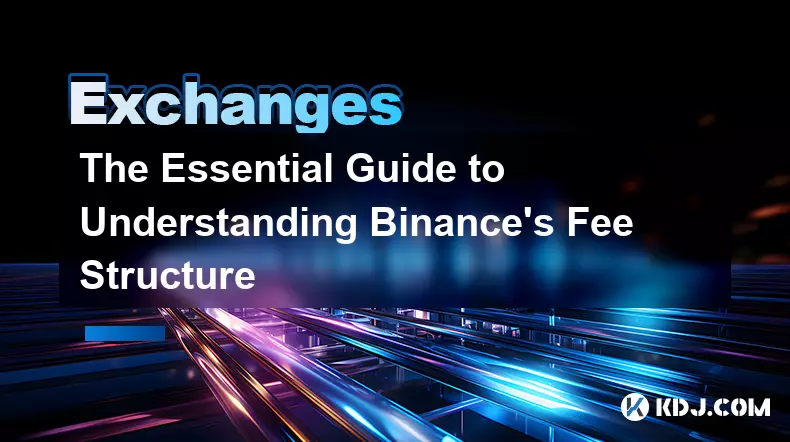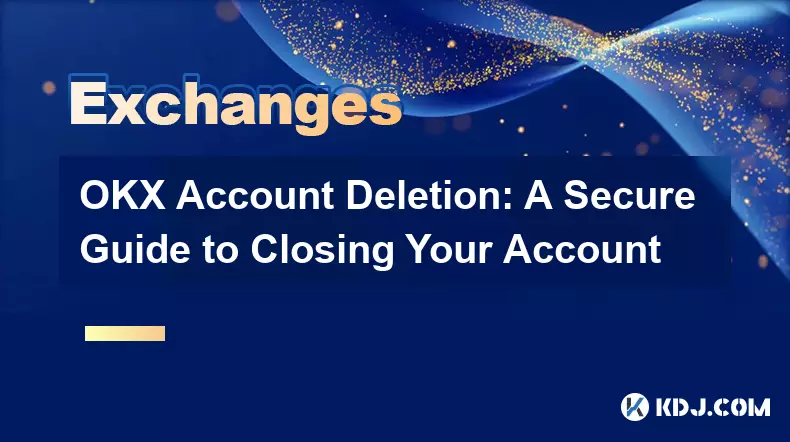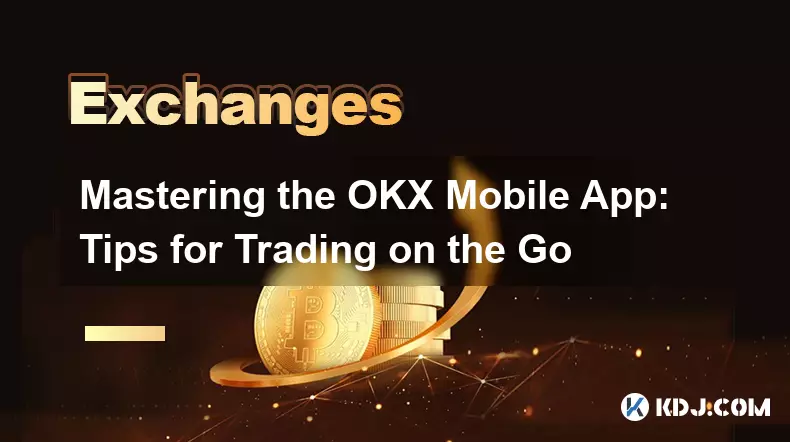-
 bitcoin
bitcoin $106680.127705 USD
0.67% -
 ethereum
ethereum $3615.722480 USD
-0.65% -
 tether
tether $0.999925 USD
-0.04% -
 xrp
xrp $2.550072 USD
5.91% -
 bnb
bnb $1002.572269 USD
-0.90% -
 solana
solana $168.746669 USD
1.08% -
 usd-coin
usd-coin $0.999832 USD
-0.03% -
 tron
tron $0.297244 USD
1.97% -
 dogecoin
dogecoin $0.182965 USD
0.71% -
 cardano
cardano $0.600432 USD
2.56% -
 hyperliquid
hyperliquid $41.439691 USD
-1.57% -
 chainlink
chainlink $16.548399 USD
2.40% -
 bitcoin-cash
bitcoin-cash $524.993680 USD
3.45% -
 stellar
stellar $0.302259 USD
4.10% -
 zcash
zcash $539.994871 USD
-16.31%
The Essential Guide to Understanding Binance's Fee Structure
Binance's fee model rewards high-volume traders and BNB holders with lower maker/taker fees, VIP tiers, and discounts across spot, futures, and withdrawals.
Nov 05, 2025 at 06:39 am

Understanding Binance's Trading Fee Model
1. Binance operates on a tiered fee structure that adjusts based on trading volume and BNB holdings. Users who trade higher volumes over a 30-day period are rewarded with lower fees, creating an incentive for active participation in the marketplace.
2. Fees are categorized into two types: maker and taker. Makers provide liquidity by placing limit orders that don’t execute immediately, benefiting the order book. Takers remove liquidity by executing against existing orders. Typically, maker fees are slightly lower than taker fees, encouraging users to place limit orders.
3. The standard taker fee starts at 0.1%, while the maker fee begins at 0.1% as well but can drop significantly depending on user activity. These base rates apply to users who do not hold BNB or have low trading volume.
4. Users can reduce their fees by holding Binance Coin (BNB) in their spot wallet. Choosing BNB as the fee payment method automatically applies a discount, often reducing fees by up to 25%. This feature makes BNB more than just a tradable asset—it serves a functional role within the platform’s economy.
How VIP Programs Influence Fee Discounts
1. Binance offers a VIP program with multiple tiers, each offering progressively better fee rates. Access to these tiers depends on a combination of 30-day trading volume and average BNB balance held in the account.
2. Each VIP level corresponds to specific fee ranges for both makers and takers. For instance, VIP 1 might offer maker fees as low as 0.08% and taker fees at 0.09%, with further reductions available at higher levels such as VIP 5 or VIP 9.
3. The system recalculates eligibility daily, allowing users to move up or down tiers dynamically. This responsiveness ensures that traders remain engaged and competitive, knowing their status isn't fixed.
4. Institutional clients and high-frequency traders may qualify for dedicated API fee structures or custom agreements, providing even greater flexibility and cost efficiency tailored to large-scale operations.
Fees Beyond Spot Trading
1. Futures trading on Binance follows a similar maker-taker model but includes additional parameters such as leverage and contract type. Standard futures fees start around 0.02% for makers and 0.04% for takers, significantly lower than spot trading due to the nature of derivatives markets.
2. Margin trading incurs interest charges in addition to transaction fees. These interest rates vary based on supply and demand for specific assets and are updated hourly. Borrowing stablecoins like USDT often has different rates compared to volatile tokens like BTC or ETH.
3. Withdrawal fees differ across cryptocurrencies and are designed to cover blockchain network costs. Binance sets these fees according to network congestion and transaction size, meaning they can fluctuate without prior notice.
4. Deposit fees are generally waived for most assets, though certain networks may impose minimal charges during periods of high traffic. It is crucial for users to verify the correct deposit network to avoid loss of funds.
5. Using BNB to pay for any transaction fee results in immediate savings across all service types—this includes withdrawals, futures trades, and even launchpad participation.
Strategies to Minimize Fees on Binance
1. Accumulating and holding BNB not only reduces fees but also grants access to exclusive token sales and promotions. Regular traders should consider allocating a portion of profits to maintain a healthy BNB balance.
2. Timing large trades to align with monthly volume resets can help maintain VIP status. Monitoring cumulative volume through Binance’s dashboard allows for strategic planning ahead of billing cycles.
3. Utilizing limit orders instead of market orders consistently positions the user as a maker, benefiting from lower fee rates over time. This approach requires patience but pays off in reduced costs.
4. Automating fee payments in BNB ensures continuous discounts without manual intervention—users can set this preference once and forget it.
5. Exploring Binance’s referral program provides another avenue for offsetting fees. Earning commission from referred traders contributes directly to covering transaction costs, effectively lowering the net expense.
Frequently Asked Questions
What happens if I don’t have enough BNB to cover the discounted fee?If your BNB balance is insufficient, Binance will charge the remaining amount in the traded asset or BUSD, depending on your settings. However, you’ll only receive the discount proportional to the BNB used.
Are there hidden fees when using third-party payment methods like credit cards?Yes, purchasing crypto via card involves a processing fee typically ranging from 1.8% to 3.5%. This is separate from trading fees and is charged by the payment provider, not Binance directly.
Can I change my fee payment currency after a trade?No. The choice of fee currency must be set before the trade executes. Once a transaction is completed, the fee deduction is final and cannot be altered retroactively.
Do OTC trades incur the same fees as regular spot trades?OTC transactions usually operate under different terms and are negotiated privately. They often carry lower visible fees but may include spread adjustments instead of direct charges.
Disclaimer:info@kdj.com
The information provided is not trading advice. kdj.com does not assume any responsibility for any investments made based on the information provided in this article. Cryptocurrencies are highly volatile and it is highly recommended that you invest with caution after thorough research!
If you believe that the content used on this website infringes your copyright, please contact us immediately (info@kdj.com) and we will delete it promptly.
- SWIFT, ISO 20022, and Blockchain: Bridging TradFi and DeFi
- 2025-11-11 17:20:01
- Uniswap (UNI) Price Pumps: Is This the Cryptocurrency Game Changer?
- 2025-11-11 16:50:02
- Uniswap's UNIfication: Token Burn, Governance Overhaul, and a New Era for UNI
- 2025-11-11 17:20:02
- ICP Price, Stablecoin Supply, and Upside Potential: Decoding the Trends
- 2025-11-11 17:10:02
- India, South Africa, Gandhi, Mandela: A Coin's Tale and Shifting Trade Winds
- 2025-11-11 17:20:02
- Obama, Veterans, and Washington: A Balmy Day of Gratitude
- 2025-11-11 17:30:01
Related knowledge

Common Mistakes to Avoid on OKX: A Guide for New Traders
Nov 04,2025 at 03:37pm
Understanding the Interface Before Trading1. New traders often jump into placing orders without fully exploring the OKX platform layout. Taking time t...

OKX TradingView Integration: A Guide to Advanced Chart Analysis
Nov 02,2025 at 03:37am
OKX and TradingView: Bridging the Gap for Professional Traders1. OKX, one of the leading cryptocurrency exchanges, has integrated with TradingView to ...

Finding Your OKX Deposit Address: A Quick and Safe Guide
Nov 05,2025 at 01:15pm
Finding Your OKX Deposit Address: A Step-by-Step Process1. Log into your OKX account using your registered credentials. Ensure you are accessing the o...

OKX Savings Guide: A Low-Risk Strategy for Earning Crypto
Nov 05,2025 at 06:55am
Understanding OKX Savings and Its Role in Crypto Earnings1. OKX Savings offers users a straightforward method to earn passive income by leveraging idl...

OKX Account Deletion: A Secure Guide to Closing Your Account
Nov 05,2025 at 08:44am
Understanding the Implications of Account Closure1. Closing your OKX account permanently removes access to all associated trading features, including ...

Mastering the OKX Mobile App: Tips for Trading on the Go
Nov 05,2025 at 01:19am
Streamlined Navigation for Efficient Trading1. The OKX mobile app features a clean and intuitive interface that allows traders to access key functions...

Common Mistakes to Avoid on OKX: A Guide for New Traders
Nov 04,2025 at 03:37pm
Understanding the Interface Before Trading1. New traders often jump into placing orders without fully exploring the OKX platform layout. Taking time t...

OKX TradingView Integration: A Guide to Advanced Chart Analysis
Nov 02,2025 at 03:37am
OKX and TradingView: Bridging the Gap for Professional Traders1. OKX, one of the leading cryptocurrency exchanges, has integrated with TradingView to ...

Finding Your OKX Deposit Address: A Quick and Safe Guide
Nov 05,2025 at 01:15pm
Finding Your OKX Deposit Address: A Step-by-Step Process1. Log into your OKX account using your registered credentials. Ensure you are accessing the o...

OKX Savings Guide: A Low-Risk Strategy for Earning Crypto
Nov 05,2025 at 06:55am
Understanding OKX Savings and Its Role in Crypto Earnings1. OKX Savings offers users a straightforward method to earn passive income by leveraging idl...

OKX Account Deletion: A Secure Guide to Closing Your Account
Nov 05,2025 at 08:44am
Understanding the Implications of Account Closure1. Closing your OKX account permanently removes access to all associated trading features, including ...

Mastering the OKX Mobile App: Tips for Trading on the Go
Nov 05,2025 at 01:19am
Streamlined Navigation for Efficient Trading1. The OKX mobile app features a clean and intuitive interface that allows traders to access key functions...
See all articles










































































